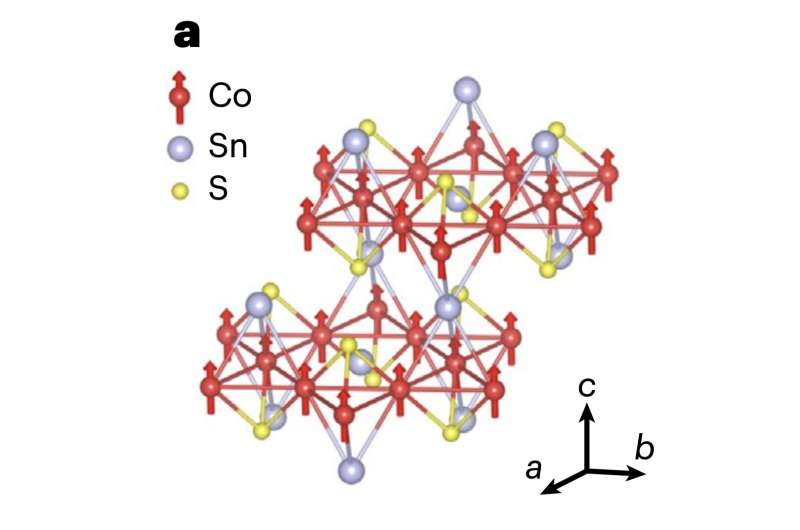January 30, 2023 feature
This article has been reviewed according to Science X's and . have highlighted the following attributes while ensuring the content's credibility:
fact-checked
peer-reviewed publication
trusted source
proofread
Modulating magnetism in a Weyl semi-metal using current-assisted domain wall motion

Spintronic devices are emerging technologies that exploit the intrinsic spin of electrons to store and process data. These technologies have the potential to outperform conventional electronics both in terms of speed and energy-efficiency.
A team of researchers at Peking University, the Chinese Academy of Sciences and other institutes in China have recently introduced an approach that could potentially help to improve the efficiency of spintronic devices. Their strategy, outlined in a paper published in Nature Electronics, entails the modulation of magnetism in a magnetic Weyl semimetal, which could in turn move the domain wall, the region in a ferromagnetic material where the direction of magnetization changes.
"The efficiency of spintronic devices can be improved by generating higher effective magnetic fields with lower working currents," Quiyuan Wang and his colleagues wrote in their paper. "Spin-transfer torques can drive magnetic domain wall motion in a device composed of a single material, but a high threshold current density is typically required to move the domain wall and improving the effective magnetic field in common itinerant ferromagnets is difficult."
Wang and his colleagues essentially devised an approach to modulate magnetism in Co3Sn2S2, a magnetic Weyl semimetal. Magnetic Weyl semimetals are materials that host exotic quasiparticles, known as Weyl fermions. These crystalline solids have sometimes been proposed as potential material candidates for the development of spintronic devices.
The strategy proposed by the researchers specifically entails the movement of the so-called domain wall via a phenomenon called spin-transfer-torque, which occurs in ferromagnetic materials. In spintronics research spin-transfer-torque is used to manipulate the magnetization of materials, allowing devices to store and process data more efficiently.
To test the effectiveness of their method, the team collected a series of measurements and ran several simulations. Their findings were highly promising, highlighting the sizable potential of magnetic Weyl semimetals for creating new spintronic devices.
"We examine the effect of d.c. current on magnetic reversal using anomalous Hall resistance measurements and domain wall motion using time-of-flight measurements," Wang and his colleagues wrote in their paper. "At 160 K, the threshold current density for driving domain wall motion is less than 5.1 × 105 �� c��−2 at zero external field and less than 1.5 × 105 �� c��−2 at a moderate external field (0.2 kOe). The spin-transfer-torque effective field can reach as high as 2.4–5.6 kOe MA−1 c��2 at 150 K."
Through spin-transfer-torque-assisted domain wall propagation, Wang and his colleagues were able to modulate the magnetization reversal process in Co3Sn2S2 nanoflakes at low current densities. Further analyses revealed that the unique parameters of Co3Sn2S2 are particularly favorable for enabling the motion of domain walls.
While the researchers' study focused on Co3Sn2S2 , the same approach could also be used to move domain walls in other magnetic Weyl semimetals, potentially enabling greater device efficiencies. In the future, their work could thus pave the way towards the creation of a new set of more energy-efficient spintronic devices based on these promising materials.
More information: Qiuyuan Wang et al, Magnetism modulation in Co3Sn2S2 by current-assisted domain wall motion, Nature Electronics (2022).
Journal information: Nature Electronics
© 2023 Science X Network




















